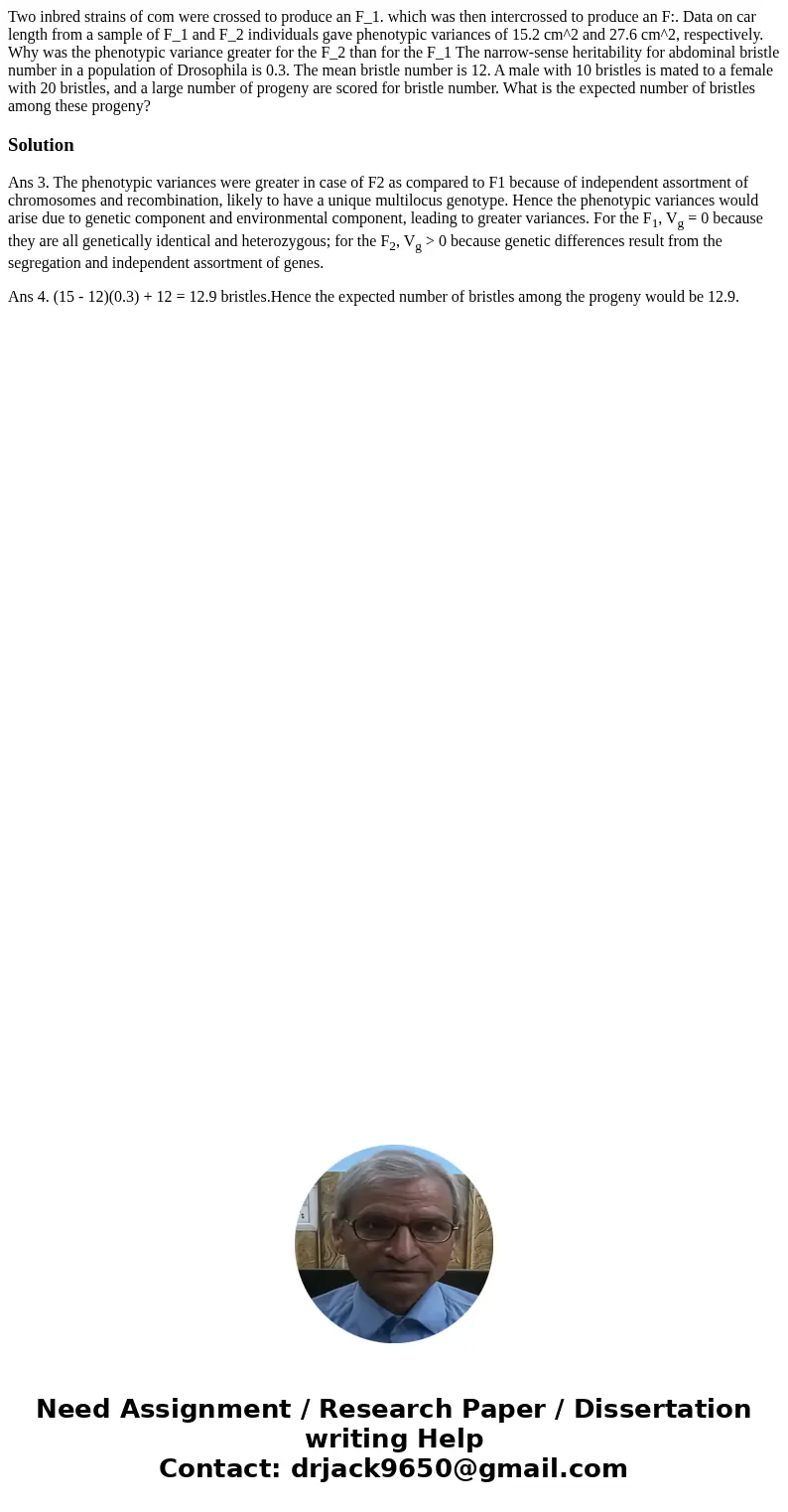Two inbred strains of com were crossed to produce an F1 whic
Two inbred strains of com were crossed to produce an F_1. which was then intercrossed to produce an F:. Data on car length from a sample of F_1 and F_2 individuals gave phenotypic variances of 15.2 cm^2 and 27.6 cm^2, respectively. Why was the phenotypic variance greater for the F_2 than for the F_1 The narrow-sense heritability for abdominal bristle number in a population of Drosophila is 0.3. The mean bristle number is 12. A male with 10 bristles is mated to a female with 20 bristles, and a large number of progeny are scored for bristle number. What is the expected number of bristles among these progeny?
Solution
Ans 3. The phenotypic variances were greater in case of F2 as compared to F1 because of independent assortment of chromosomes and recombination, likely to have a unique multilocus genotype. Hence the phenotypic variances would arise due to genetic component and environmental component, leading to greater variances. For the F1, Vg = 0 because they are all genetically identical and heterozygous; for the F2, Vg > 0 because genetic differences result from the segregation and independent assortment of genes.
Ans 4. (15 - 12)(0.3) + 12 = 12.9 bristles.Hence the expected number of bristles among the progeny would be 12.9.

 Homework Sourse
Homework Sourse